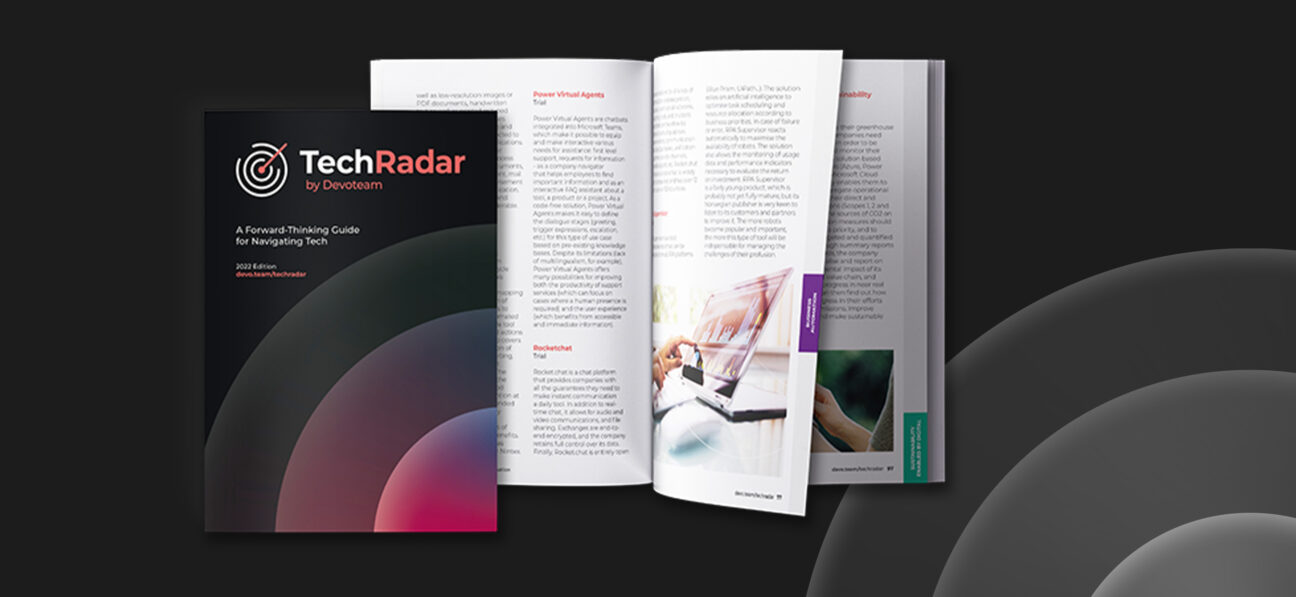
What you need to know about Amazon’s Quantum Ledger Database
AWS QLDB offers businesses a centralised ledger database with a complete, immutable, and verifiable history of all changes. It’s a great choice for companies or scenarios where the integrity of transaction history is subject to audits and has legal implications.
Trust has always been important when it comes to data. As stated in Forbes, “Today, industries such as banking, capital markets, tax, health care, and research need audit trails to meet regulatory and security requirements.”
But as our world grows more complex and technical, more industries have no choice but to prioritise data integrity. They also need the ability to prove that integrity without a shadow of a doubt.
Let’s take a closer look.
What is AWS QLDB?
Amazon’s Quantum Ledger Database (QLDB) is fully managed and provides a complete and cryptographically verifiable history of all changes made to application data.
What do we mean by “complete”?
Data in AWS QLDB is “written to an append-only journal” and gives you full data lineage. Unlike traditional databases, in an append-only database you can only add information—never delete or overwrite it. Every transaction is recorded. And everything that’s ever committed to the database stays there in the exact sequence that it happened. In other words, it’s immutable.
The data log allows a company to guarantee full transparency, not just inside the organisation but outside of it as well. If there’s ever a dispute about a transaction, the company can prove that the history is accurate, intact, and complete.
But how can a company prove the integrity of its data history?
What do we mean by “cryptographically verifiable”?
AWS QLDB is a great solution for companies that must be able to guarantee that their data history has not been tampered with. And it’s all thanks to cryptographic verification.
As AWS solutions architect Dan Blaner explains, you can think of each transaction or interaction in the database as a unique “fingerprint.” That’s your cryptographic hash. “If you change even a single bit in your input data and run it back to the algorithm, it produces a very different hash. And so by comparing hashes of data at two different points in time, you can easily tell if that data was changed—because the hashes will come out differently.”
So AWS QLDB uses a cryptographic hash chaining technique, or cryptographic checksum, to prove the integrity of your data mathematically.
Is AWS QLDB serverless?
Yes, AWS QLDB is serverless, which means you’ve got one less thing to build and manage. This makes it easy to set up and easy to scale as your business grows or evolves.
You don’t have to worry about configuring limits or provisioning resources ahead of time. As demand increases, your database simply grows to meet it.
Is AWS QLDB a blockchain service?
No. Amazon’s QLDB “is not a blockchain or distributed ledger technology.” While blockchain technologies are decentralised, AWS QLDB is centralised.
What’s the difference?
According to AWS, the decentralised nature of blockchain means that “no single entity owns the application”; it’s used in contexts where “parties do not necessarily trust each other fully.” (In this case, Amazon offers a fully managed blockchain—see Amazon Managed Blockchain.)
In contrast, Amazon’s Quantum Ledger Database is “purpose-built for customers who need to maintain a complete and verifiable history of data changes in an application that they own.” It’s great for any business scenario that does not involve multiple, untrusted parties.
But even though QLDB is not a blockchain database, it does have something in common with blockchain: the Merkle tree data structure also called a binary hash tree. This mathematical data structure is fundamental to blockchain technology and is used to encrypt blockchain data in Bitcoin and other cryptocurrencies. And in QLDB, Amazon uses the Merkle tree structure in its data verification process. Why is this important? The Merkle audit proof allows you to verify a revision “by checking only a small subset of your ledger’s revision history” rather than having to recalculate the journal’s full hash chain. It’s key to QLDB’s immutability and efficiency!
What are the benefits of AWS QLDB?
Here are just some of the benefits of using an AWS Quantum Ledger Database:
- Immutable: As we’ve already discussed, QLDB stores every data change accurately and in a sequential fashion. The log, or journal/ledger, can’t be changed or tampered with.
- Transparent: Since every transaction is recorded, this ledger database offers transparency. Nothing can be left out or obscured, and it’s easy to query records and review history.
- Verifiable: AWS QLDB relies on cryptography to create what’s commonly referred to as a digest. A cryptographic hash function provides a summary of the change history. This allows you to provide indisputable proof that your data lineage is accurate and intact.
- Serverless: QLDB uses serverless architecture, which makes it easy to set up, use, and scale.
- Easy: Traditional databases can get complicated to architect. With AWS QLDB, you can get started right away with their developer guide.
- High-performance and highly available: Since QLDB is centralised and doesn’t use blockchain technology, it doesn’t need peer nodes to validate a transaction before it can store the data in the ledger. Therefore, transactions are easier and faster than on decentralised/blockchain frameworks. In fact, the nearly real-time streaming capability within QLDB allows businesses to respond quickly based on what’s happening in the data log.
- Consistency of transactions: The database ensures atomicity, consistency, isolation, and durability (ACID) properties. This prevents partial or inconsistent executions. For example, when money is being transferred from one account to another, the database will record both the debit from one account and the credit to the other account—not just one or the other. It’s designed to minimise discrepancies.
- Convenient pricing model: AWS QLDB charges you only “for what you use.” Plus, there are “no minimum fees or mandatory service usage” stipulations. The benefit of that is you “do not need to provision either storage or IOs in advance.” You pay for your consumption on a monthly basis for outbound data transfers, and the first 100 GB are free. After that, the price per gigabyte ranges from USD 0.05 to 0.09, and the higher your volume, the lower your per-GB cost gets. The monthly total is itemised across write requests, read requests, journal storage, indexed storage, and outbound data transfer.
- Familiarity and universality: This is a more technical subject, but AWS QLDB’s support of PartiQL makes it easy to use and will be familiar to developers too. PartiQL is a “new open standard query language.” It allows you to use familiar SQL operators to perform queries, update the data, and more with ease.
What are some AWS QLDB use cases?
The number of businesses and organisations that rely on transparent, accurate, verifiable data trails is growing. (This is especially the case since many are leaning toward microservices-based architectures, as opposed to traditional, monolithic one-size-fits-all approaches that easily become bloated, inefficient, and error-prone.)
So let’s look at some industries whose needs AWS QLDB can readily meet.
- Finance: Ledgers have always been important in banking data to prevent transactions from being manipulated.
- Human resources: QLDB can be useful for keeping an intact data trail for each employee. This tracking prevents disputes in payroll, bonuses, benefits administration, etc.
- Insurance: Insurance companies are high on the list for having to validate and prove data history at any time. Policy life cycles are long and complex, and data accuracy is crucial in claims processing and interactions with beneficiaries.
- Health care and pharmaceutical: QLDB can be useful as a source of truth for patient records. In one use case, it has also streamlined “the cumbersome and costly drug, biologic, device development, and FDA approval processes … to create transparency between life science companies and frontline health care providers.”
- Retail and supply chain: We all know the extent to which human error can affect inventory, distribution, and delivery. But with an immutable ledger, every data point can be tracked. QLDB allows supply and logistics companies to retain and access all historical data so they can make appropriate decisions in real-time.
- Manufacturing: QLDB is useful in manufacturing because you can record all data related to production, assembly, and batching. You can then track and access a complete history, which is helpful, especially when high volume and production speed are involved and a small error can have huge ramifications.
- Auctions, bidding, and other competitive transactions: As AWS states, “an e-commerce business may need to show proof of a winning bid.” We have come a long way since old-school auctions. People today are bidding on everything from limited-edition sneakers to 1980s fast-food toy collectables. And we’re exchanging large sums of money for these transactions across borders and without as much as a handshake.
AWS QLDB can be moulded to meet niche use cases. This flexibility makes it excellent for businesses of all sizes that offer high-stakes products and services.
How can I learn more?
This article is a part of a greater series centred around the technologies and themes found within the first edition of the TechRadar by Devoteam. To read further into these topics, please download the TechRadar by Devoteam.

Want to know more about AWS QLDB?
Check out TechRadar by Devoteam to see what our experts say about its viability in the market.